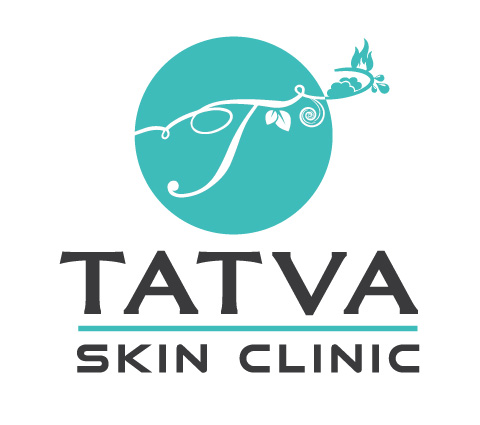“Life isn’t perfect but your hair can be.”
Is it ?
Lustrous, smooth, strengthened, nourished hair aka “perfect hair” is a promise sold to us by the manufacturers of so called “Hair cosmetics”.These are the products we apply to hair and scalp to produce temporary to permanent effects. A plethora of such preparations are available over the counter.
Ever seen a tiled roof, how the tiles are placed in a overlapping fashion ??That’s exactly how the outer layer of hair (Cuticle ) is. The outer tiled layer is protected by a film of lipids, which tries to seal the gaps between the outer layer cells.
“Keratin” is yet another term commonly used.
Keratin is a protein that make up the bulk of the hair (Cortex).These proteins are present as helical structures which are held together by ionic forces . Remember the chemistry we learnt in school, yup the same ionic bonds.
Weathering,or the progressive degeneration due to cumulative insults by chronic UV exposure, chemical preparations, hot combs etc. leave the hair dry and lustureless.
In order to get “that perfect hair” we subject our hair to countless products such as shampoos, conditioners, hair oils, hair colour/dyes, bleaches, rebonding, straightening and perming agents.
What shampooto use?
which hair oil to apply?
Do I use a conditioner or not ??
These are the common questions everyone have.
Come along with me to find some answers (I mean figuratively).
Shampoos are yet to celebrate their hundredth birthday.These formulations are scalp cleansers.
Shampoos are an amalgamation of a minimum of 10-20 ingredients. Each ingredient serves an unique purpose. They are primarily aqueous or water based, with surfactants, thickeners, foaming agents, preservatives, fragrances and so on.
Surfactants are detergents which cleanse the scalp. Chemically they are fatty hydrocarbon chains (again, remember chemistry). Depending upon the electric charge they carry,surfactants are anionic, cationic or amphoteric. Amphoteric surfactants are mild cleansers with excellent dermatological properties.
Lauryl sulphate, Laureth sulphate, Sulfosuccinates, Betaines, Polyoxyethylene fatty alcohols and sorbital esters are commonly used surfactants in shampoos.
“Is your shampoo sulphate free?” Sulphates are very good cleansers but they being negatively charged molecules contribute to further increase in negativity on the surface of hair creating repulsion between hair strands.
Hence we can say that Sulphate free shampoos are indeed a better choice.
We ought to use a conditioner following shampooing of hair as the conditioner seals the gaps between cells on the outer layer (roof tiles) minimizes frizz, enhances smoothness and improves combability.
Instant conditioners are those which are rinsed off after few minutes of application, deep conditioning agents are left on for about thirty minutes and are intended for repairing damaged hair by increasing hair strength.Leave on conditioners are compounds which eliminate static and give apparent thickness to hair strands.
Hair oils are essentially conditioning agents, the nourishing value of these is questionable, except Coconut oil which has the capacity to penetrate hair shaft and reduce protein loss.
Oiling of hair prior to shampooing certainly reduces the effects of detergents on hair shaft/strand.
Note: In people who suffer from dandruff / seborrheic dermatitis hair oils are to be avoided.
Going natural and organic is the new fad, but are we ok with natural greying of hair ??!!
Grey hair has been equated to cosmetic unattractiveness and this led to the thronging of markets with a zillion hair colouring products.
Hair dyes can be classified as temporary dyes, semi permanent dyes and permanent dyes. This classification is based on the depth of penetration into the hair strands.More deeper they reach more damaging they are. Natural extracts from plant sources are temporary dyes which cause least damage but require frequent applications.
Para dyes which is the common ingredient in most hair dye/hair colour products has the potential to cause allergic contactdermatitis.They also contribute to hair loss by inducing apoptosis (programmed cell death ).
Grass is always greener on the other side, so is the hair type !!
One with straight hair wants those gorgeous curlswhilethose with curls just love ironing them flat.
Permanent straightening, keratin smoothening is achieved by restructuring the disulphide binds present between keratin molecules.
Keratin treatments also known as hair smoothening procedures claim to have lesser damaging effects when compared to chemical straightening but its untrue.
Perming or permanent curling is a process similar to that of straightening the only difference being rearrangement of disulphide bonds to achieve curls instead of straight hair.
About twenty percent of tensile strength is lost due to perming and chemical straightening leaving the hair brittle and more prone to damage.
Most people complain of hair loss after undergoing such treatments, this loss is more due to easy breakage of hair.
Our desire for perfect hair has driven us to subject our hair to undue use of hair cosmetics and treatments altering hair types.
Ideal hair care regimen involves use of hair oil, applied preferably an hour or two before hair wash, an amphoteric pH balanced shampoo to cleanse the scalp followed by use of conditioner after every wash. If the need arises, use temporary hair dyes as opposed to permanent ones, keep your hair away from hold combs, irons, curlers and do not yank at your wet hair !! This is the mantra for near perfect hair .
